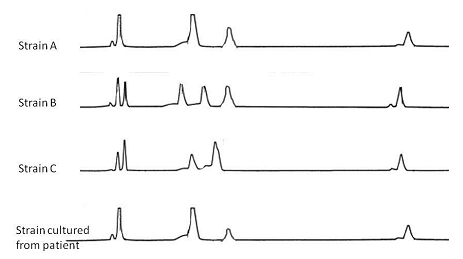To make sure they treat the infection with the correct drug, doctors order DNA fingerprinting of a sample of bacteria taken from the patient for comparison to known fingerprints of strains A, B, and C. With which antibiotic should the patient be treated?
A patient is admitted to the hospital with a mysterious infection. After running some standard tests, doctors believe that the infection is caused by one of three closely—related bacterial strains — A, B, or C — that are hard to treat because they have become resistant to some antibiotics.
Strain A is resistant to antibiotic beta and antibiotic omega
Strain B is resistant to antibiotic alpha and antibiotic omega
Strain C is resistant to antibiotic alpha and antibiotic beta

A. antibiotic alpha.
B. antibiotic beta.
C. antibiotic omega.
D. antibiotic beta or antibiotic omega.
E. any antibiotic will work to kill the bacteria causing the infection.
A. antibiotic alpha.
You might also like to view...
The perianth of a flower consists of:
A. the pistil and stamens B. the petals and sepals C. the peduncle and receptacle D. the anthers and stigma E. the style and ovary
Legless caecilians belong to the ____ lineage
a. Caudata b. Aves c. Squamata d. Gymnophiona e. Anura
Basophils are white blood cells that defend the body against large parasites.
a. true b. false
When members of the gene pair carried by an individual are not alike, the individual is said to be
____________________. Fill in the blank(s) with the appropriate word(s).